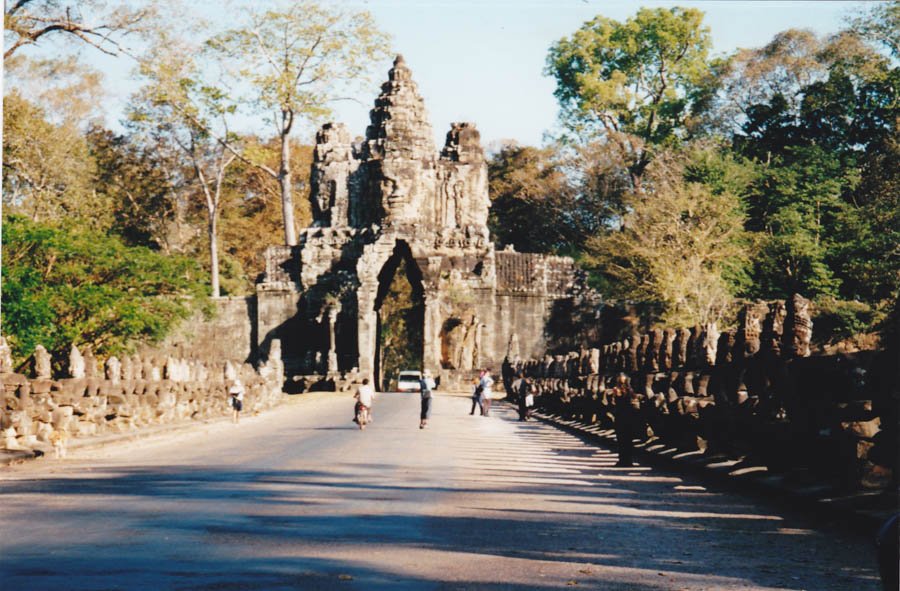Nagas are everywhere in Buddhist art and architecture. In order to visit Angkor Thom in Cambodia, you need to walk across a bridge adorned on either side with the Naga balistrade. Here the Naga provides protection from the moat and linkage between heaven and earth. King Jayavarman VII, who reigned in Cambodia during the building of Bayon and Angkor Thom, among other major temples of the period late 12th to early 13th century. (See my travel website for a full set of Angkor Wat photos taken during when I was there in 2001.)
During my visit to the Prasart Museum in Bangkok (for more information on Prasart see earlier post), I took this picture of a sandstone carving which was originally the corner piece of a pediment at a temple in northeastern Thailand. It depicts a Naga emerging from the mouth of a Makara. According to a website, The Naga and Makara, the Makara is a creature combining the crocodile, the elephant and the serpent. This turns out to be a common theme among Naga carvings and sculptures throughout SE and Central Asia.

Naga guarding temple entrance, Luang Prabang, Laos.
In Laos, the naga has a special place in Mekong River lore and daily life. At the end of Buddhist Lent, locals claim to witness a naga fireball rising from the river. As well, people sacrifice to the naga for protection from danger while traveling on the river.

Naga stairway at Doi Suthep at Chiang Mai

Cornerstone decorated with Naga, sandstone, Khmer, 11th century.
Another recurring story is that of Mucalinda, the serpent who protected Gautama or Sakyamuni Buddha while he was meditating in Bodh Gaya. It rained for a week, causing the waters to rise, but Mucalinda wrapped its coils beneath the Buddha to create a seat and covered his body with its seven heads to keep him dry.

Buddha meditating under Naga, Dambulla Cave Temples, Sri Lanka.

3 thoughts on “Naga and the Buddha”
Cheryl, I’m so happy to find you over here on this site!… Love the photos. so beautiful….I bet you are going to be doing a lot of traveling in your retirement!
I sure hope so, Michelle! Thanks for visiting.
Hey Cheryl, these pictures are gorgeous. Could I add them to wikipedia please.
Comments are closed.